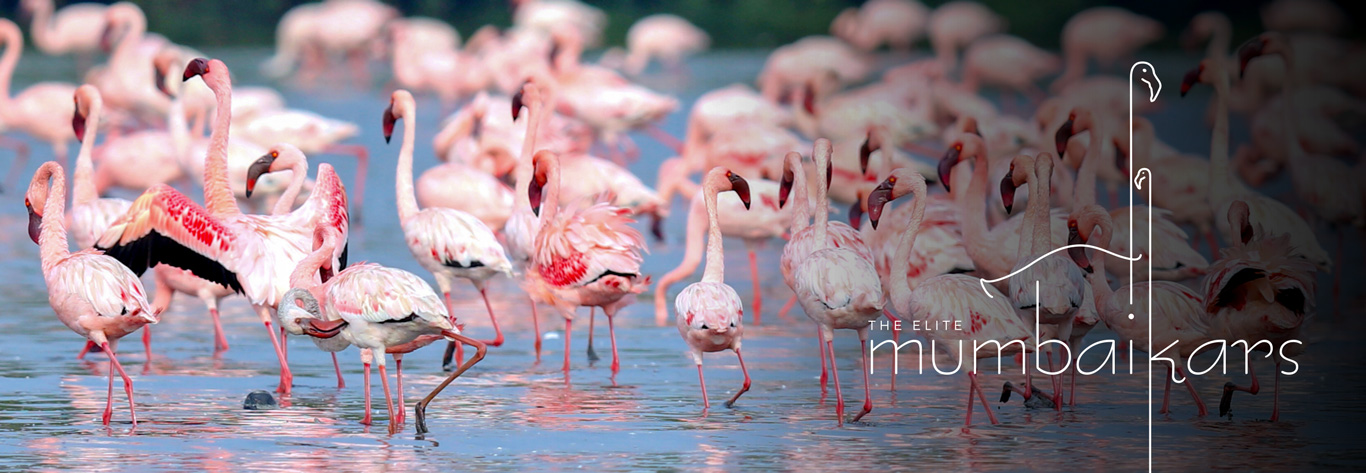
The Elite Mumbaikars
-

The Elite Mumbaikars
The Elite Mumbaikars
-

The Elite Hampikars
The Elite Mumbaikars
-

Bathed in gold
The Elite Mumbaikars
Bathed in gold
Covered in bold hues of orange, grey and gold, this surreal image from a Mumbai sunset looks straight out of a postcard. As the magnificent ball of fire blankets the sea with its fiery glow, witnessing its beauty brings time to a standstill. Being able to view this tranquil phenomenon, un-obscured, from a vantage point as this, breathes character into the frame and brings to life the romantic imagery.
-

An army rising
The Elite Mumbaikars
-

Toe the line
The Elite Mumbaikars
-

Forging ahead
The Elite Mumbaikars
Forging ahead
Seen here is the painted stork, which is a large wading bird of the stork family. They are usually seen in the freshwater wetlands. They occasionally use their wings to direct the fish towards their open bill. While young storks call out loudly, they become voiceless by the time they are 18 months.
-

Under my wings
The Elite Mumbaikars
Under my wings
A common way the Lesser Flamingo communicates with others is by lifting up its feathers which allow the black parts to be seen. Calm and gentle in nature, they do not show authority or are threatening in nature. Due to the type of food they consume, they tend to be lighter pink and white in colour.
-

Tickled pink
The Elite Mumbaikars
Tickled pink
The Greater Flamingo is the largest of all species and can be up to 61 inches tall. They only weigh about 8 pounds, which is extremely light for such a tall bird. As they usually stick to swamps and lagoons that aren’t very deep, many people don’t realise their ability to swim well.
-

In full flight
The Elite Mumbaikars
-

Fly me to the food
The Elite Mumbaikars
-

Fly the coop
The Elite Mumbaikars
-

Through thick and thin
The Elite Mumbaikars
Through thick and thin
A group of flamingos is known as colonies or flocks. The colony works together to protect each other from predators and take care of their young. Lesser flamingos are the most numerous and live in the largest flocks. Some flocks are known to have almost a million lesser flamingos.
-

You are what you eat
The Elite Mumbaikars
You are what you eat
Flamingos are a true definition of, you are what you eat. The pink and red colours of a flamingo come from eating pigments found in algae and invertebrates. Larva, small insects, mollusks, crustaceans, small fish, blue-green and red algae are part of what constitutes their diet.
-

Rank and file
The Elite Mumbaikars
Rank and file
Flamingos are often seen in long, curving flight formations and in wading groups along the shore. On certain large lakes more than a million flamingos are known to gather during the breeding season. Together they make for a picturesque sight with their slender legs, stretched out necks and feathers with tinges of red and pink.
-

Show a leg
The Elite Mumbaikars
Show a leg
Flamingos are often seen standing on one leg. Though the exact reason for that is not known, it is said they do so to regulate their body temperature, for conservation of energy or to merely dry out their legs. An adult flamingo’s legs can measure up to 30-50 inches long, which is longer than its body. Its backward bending knee is actually its ankle, while the actual knee is located close to the body, not easily visible through its plumage.
-

See eye to eye
The Elite Mumbaikars
See eye to eye
What a flamingo eats depends on the type of beak it has. Flamingos with deep-keeled beaks mostly eat algae, while the ones with shallow-keeled beaks eat insects, fish and invertebrates. They hold their bills upside down while feeding and nibble at the surface of the water to strain out their food.
-

Closed for lunch hours
The Elite Mumbaikars
-

Who is the prettiest of them all?
The Elite Mumbaikars
-

A sea of flamingos in the sea
The Elite Mumbaikars
-

Here comes the Pied Piper
The Elite Mumbaikars



















